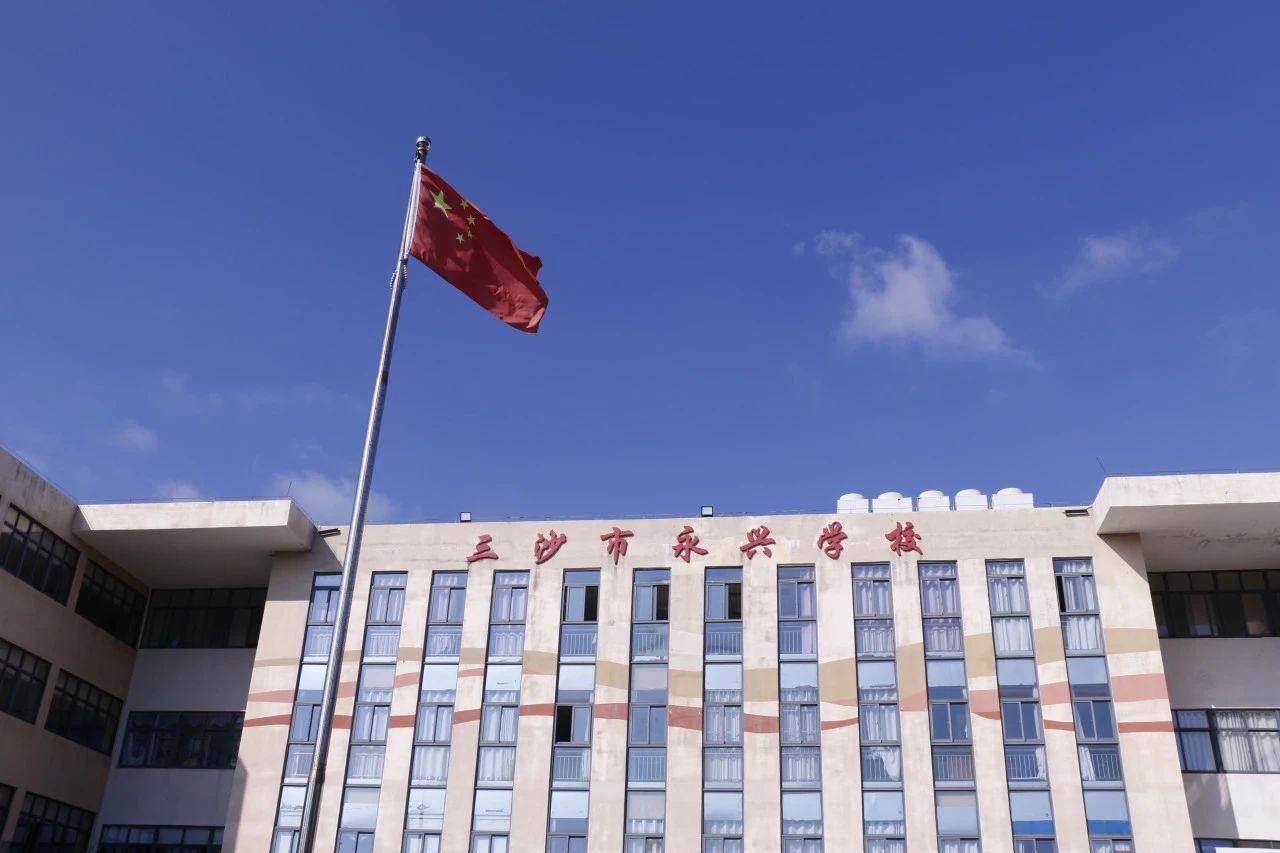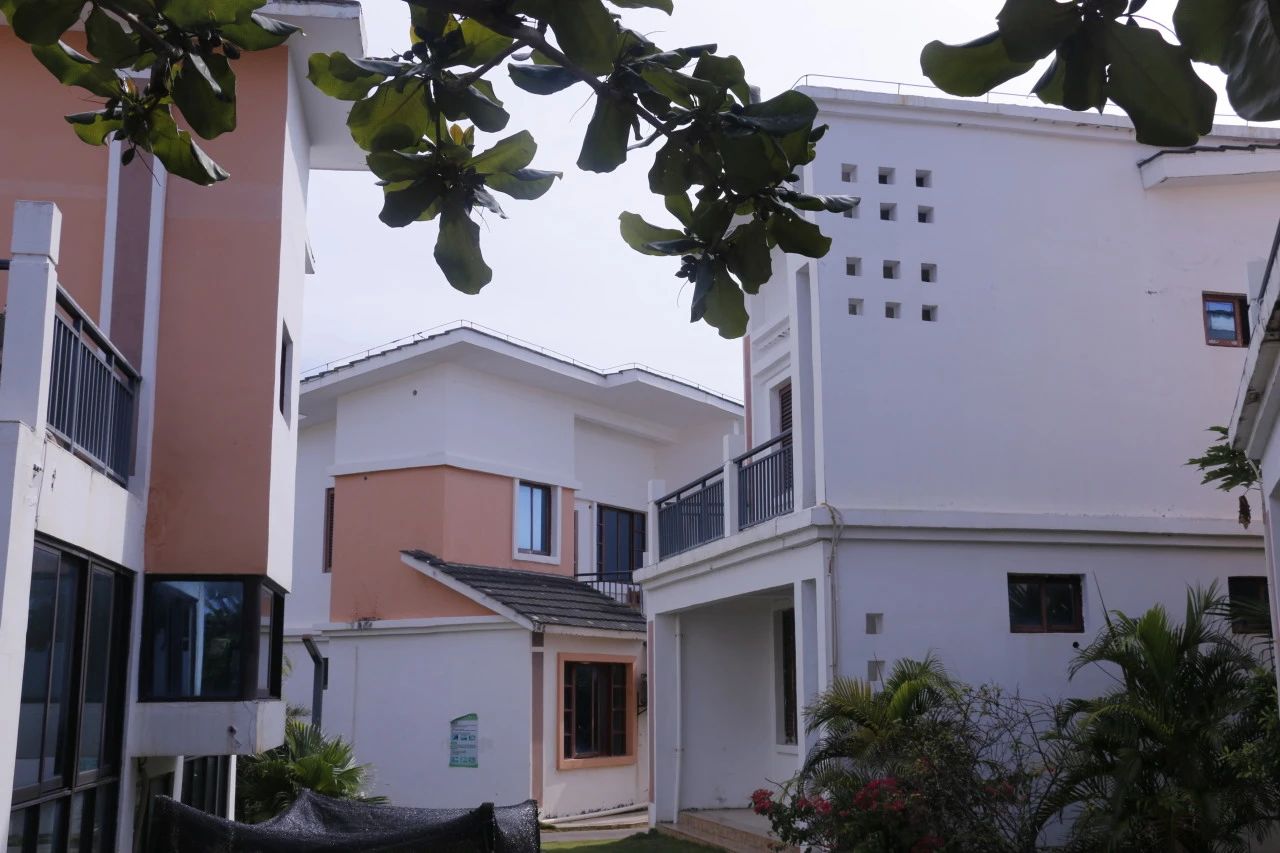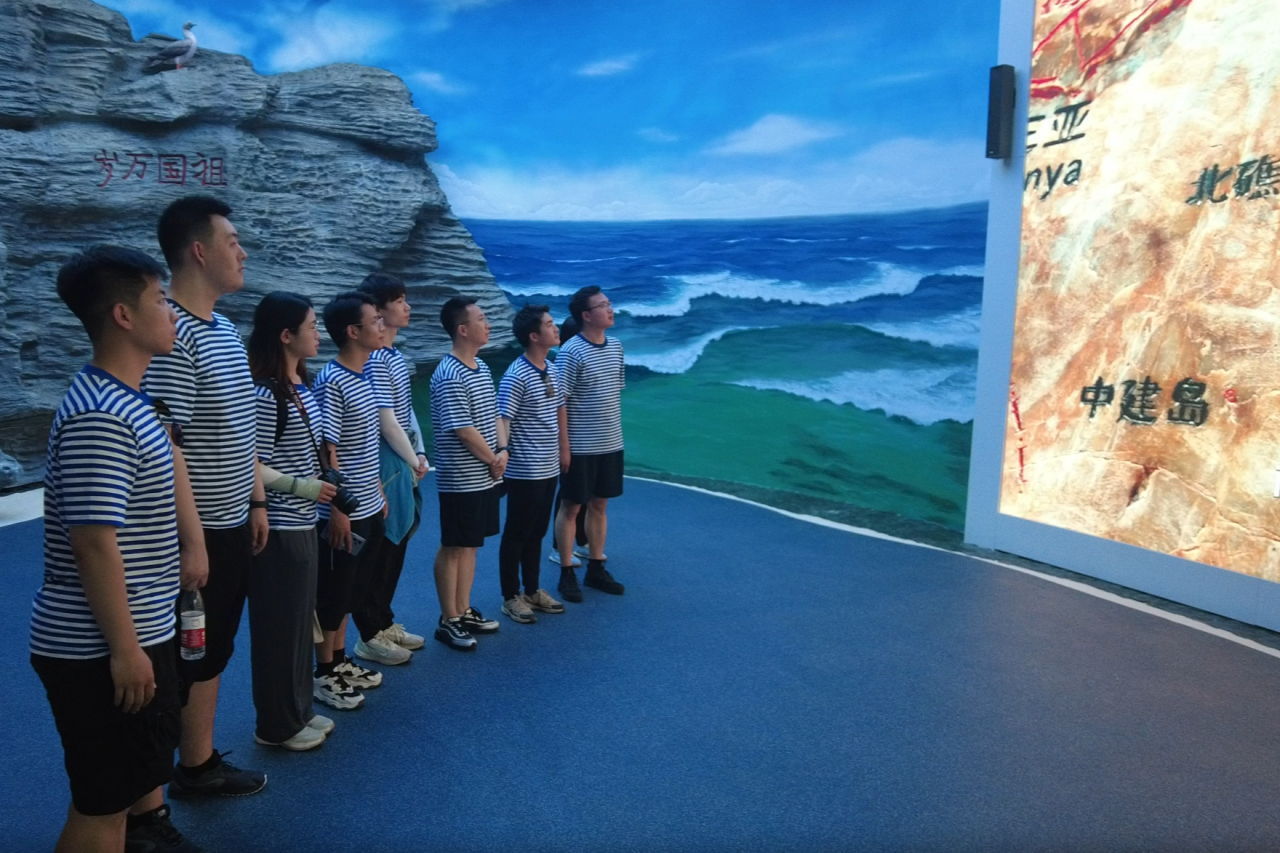A team of students from Renmin University of China (RUC) conducted social research in Sansha, China’s southernmost and least populated city, from May 13 to 15, exploring the mysteries of this enigmatic land.

The research team mostly comprised students who won the 2024 Wuyuzhang Scholarship, which is the highest honor among RUC students. During the three-day trip, team members visited islets, communities, schools, and military camps, learning and retelling the stories about the city established just 12 years ago.
As a prefecture-level city made up of islands and their surrounding waters, Sansha boasts the smallest land area but the largest sea area in China. The city has significant geostrategic importance due to its location, serving as the “southern gate” to Chinese territory.
Visiting Yongxing School
The research team’s first stop was Yongxing School in Sansha City, whose establishment ten years ago ended the history of separation between children and their parents who were stationed on the island.

Yongxing School aims to “help every student thrive”. When the team entered the brightly lit smart classroom, kids were singing “I Love Beijing Tiananmen Square” in their music class. Team members gently joined in the chorus. After the song came to an end, the team invited the kids to sing the song at Tiananmen Square when they visit Beijing.
Winners of the Wuyuzhang Scholarship set aside part of their money to establish the “Dream Come True Fund”, which will help students from Yongxing School visit Beijing and RUC.

Visiting troops on the island
Sansha has built a joint defense system involving the military, the police, and civilians. All parties work together to guard the “southern gate” of China, creating a strong atmosphere of mutual support.

The research team visited the military camp, where they engaged in a discussion with representatives of the stationed troops. Sharing their experiences of guarding the island, the soldiers emphasized that implementing the policy of mutual support between the military and civilians is essentially about helping each other and watching out for one another.
“It is hard to put on the uniform, but even harder to take it off,” they said. “We will use our own way to protect the sea and the southern border of our motherland.
During the visit, the team met Tang Yu, a former air force communications soldier who is now a teacher at Yongxing School. “Whether in the military or here, I can make meaningful contributions,” she said.

Tang’s story made a strong impression on the team members. “Many of the female soldiers are our age, yet they are already devoted to protecting our nation’s territory,” said Zhao Yilin, a senior from the School of Foreign Languages. “I am deeply touched and I will forever remember this trip.”
Engaging with the local community
Delving into the local community, the research team paid visits to historical landmarks, including the Monument for the Establishment of Sansha, the Boundary Monument of Stone Island, Xisha Islands, and the Old Loong’s Head Stone Carving. Monuments and inscriptions recorded how the grassroots government was established from scratch and gradually grew stronger over the years.

At Yongxing Community, team members had in-depth discussions with local officials about the unique experiences and challenges in grassroots governance. They also visited the old site of the Qilianyu Village Committee and explored the multifunctional roles of community facilities, including administrative offices, community activity centers, disaster shelters, and militia posts.


“The beautiful facade of Sansha hides its harsh conditions,” said a student from the team. “You can only feel it after being at sea and stationing on the island for a long time.”
Learning about ecological protection
The Qilianyu Islands, which consist of seven small islands, have the largest number of fishermen among the Xisha Islands. The research team learned that, when the earliest fishermen settled there in the 1980s, the islands were covered in garbage, and lacked electricity and drinking water. Today, the islands have turned into a beautiful and well-equipped community, thanks to projects such as seawater desalination, power generation, fishermen settlement, eco-friendly road construction, and household drinking water.


Sansha City also made relentless efforts to protect the marine environment, introducing policies such as waste and sewage management, and crackdowns on illegal fishing and tourism. Zhaoshu Island, one of the seven small islands, practices the “island chief system”, which protects clear waters, clear beaches, and green plants through the distribution of ecological responsibilities.

“Sansha City has turned from a barren island to a prosperous city within only a decade,” said Fan Siyuan, a student from the School of Economics. “How it balances economic development with ecological conservation is extremely impressive.”


